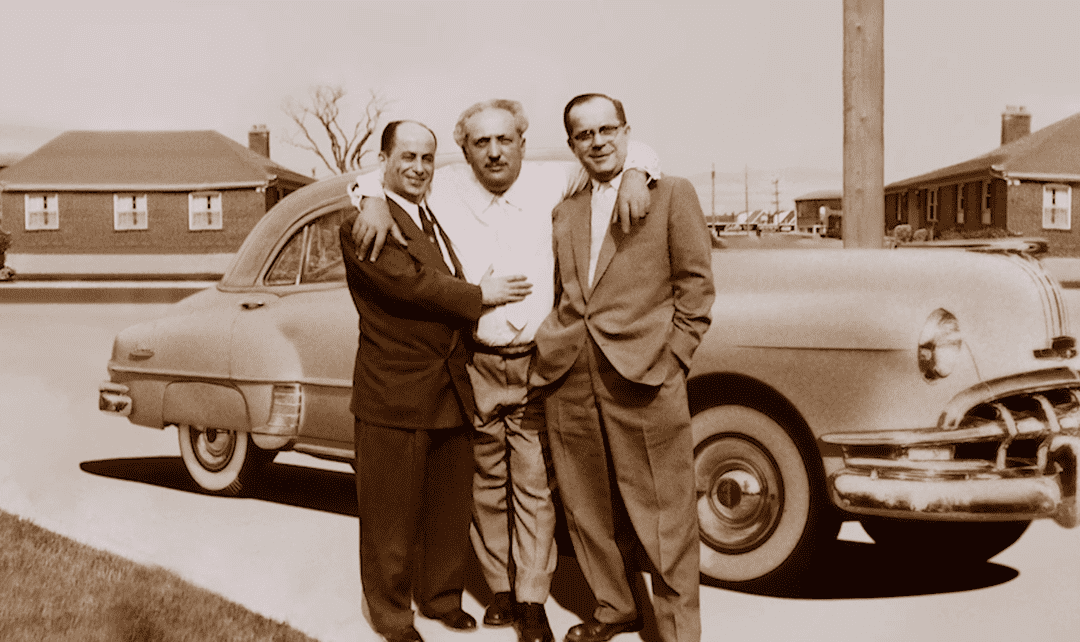Long before Toronto became a city of condominiums, there was another kind of building boom taking place. It was the construction of residential apartment buildings – which in the 1950s and ’60s was something quite novel.
Here’s something else you probably didn’t know. Many of the builders were Jewish immigrants from Eastern Europe who had escaped the Holocaust and came to Canada after the Second World War in search of a better life.
Their story and that of the development of the city is told in a new documentary called Shelter. Directed by award-winning Toronto filmmaker Ron Chapman, it had its world premiere at the 29th edition of the Toronto Jewish Film Festival in June.
According to the film, Jewish builders were responsible for the construction of about a half-million rental apartment units in Toronto between 1952 and 1975.
Why did so many of them gravitate to the real estate industry? First, there was a shortage of housing at the same time the population was growing, and they thought they could fill a need. Also there were fewer barriers to entering the industry, as David Green (son of Al Green, Greenwin Group and Greenrock Property Management) explains in the film: “You didn’t have a guild, you didn’t have a union, you didn’t have to have an education, you didn’t have to contend with an anti-Semitic establishment, they could just do it.”
And who exactly were they? The names and the companies should be familiar to those in the industry: the Diamonds/Daniels (Cadillac-Fairview Corp.), the Tenenbaums (The Tenen Group), Sam Brown’s The Brown Group, the aforementioned Greens and characters like deal-maker Eddy Cogan, who connected them all.

But before that success was a time of great hardship. The film begins with the story of their early lives and incredible escapes. In one concentration camp, Sam Brown explains in the film, “over 600 people went in and in three weeks time it was down to six and I was one of them.” Shelter makes good use of archival footage, photos and dramatic recreations.
When the persecuted immigrants finally arrived in Toronto, they encountered both opportunity and discrimination (the city once had laws banning Jews on Yonge Street). The film incorporates the memories of several of the builders and their children.
As Allan Weinbaum, son of Anne and Jack Weinbaum (W. J. Realty & Gonte Construction, now the Preston Group), recalls: “One of the great opportunities for everyone in that era if you wanted to get started in business was real estate.
“My parents and their friends would…put together a pool of money, they would buy up a property, a house or farm and they would flip it,” he says. “They had a good intuitive feel for value and where the market was going. They just kept going and going and Toronto was a good place to do that in the ’50s.”
Soon Toronto saw apartment buildings like the Village Green on Alexander Street and clusters of residential buildings at Yonge and Davisville, Yonge and Eglinton, and the High Park neighbourhood. Apartments became the first abode for many new immigrants.
As a result of the boom, Toronto has more older apartment buildings than any city in North America, says Graeme Stewart, founding director for the Centre for Urban Growth and Renewal.
“We think of ourselves as a city of houses, but we’re really not. We’re a city of apartments. It’s been the core of rental housing and affordable housing for decades,” he says, adding that more than a million people lived in apartments during that era, including the elderly, couples and factory workers.
“Even today, these apartments make up 85 per cent of the rental housing in our city. So it is a core housing infrastructure. It was so crucial in forming the city we are today.”

Ron Chapman
Director Chapman was impressed by this little known chapter in Toronto’s real estate history. He first heard about the Jewish builders from an “Irish Protestant immigrant” – Mark Kenney, who had learned the industry from some of these builders, was impressed with their contribution to the city and thought their story should be told.
“While they may be known now as successful and wealthy builders, it’s where they came from and how they got there that makes their story so astounding and compelling,” Chapman told REM.
Whether any of the builders or their families ever made a home in one of their own apartments, the film doesn’t say. Although one thing is certain. During that 23-year building boom (1952-75), the city grew from one million to two million people and has become one of the most successful examples of urban multiculturalism.
The film is screening on OMNI at these times (re-runs to follow):
TV version
- OMNI BC/Pacific – Sunday, June 13 at 9 p.m. PT
- OMNI ALB/Prairies – Sunday, June 13 at 9 p.m. MT
- OMNI 1 – Tuesday, June 15 at 10 p.m. ET
Feature film version
- OMNI BC/Pacific – Wednesday, June 16 at 2 p.m. PT
- OMNI ALB/Prairies – Wednesday, June 16 at 1 p.m. MT
Watch the trailer for Shelter.
Diane Slawych is a contributing writer for REM.













